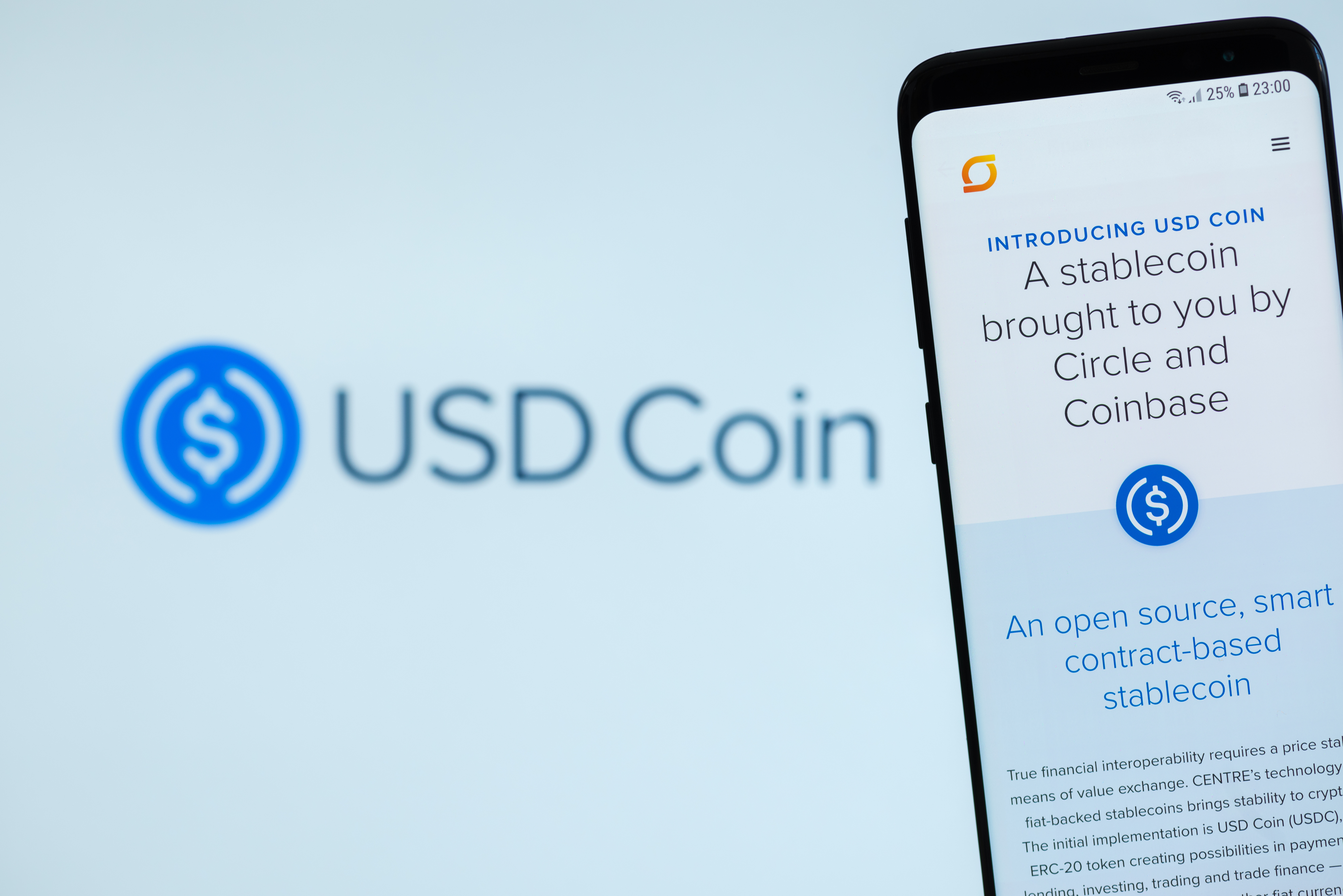Forget Virgin Australia: Wall Street's hottest IPO just surged 500% in three weeks
Anyone celebrating a 7% stag profit on the Virgin Australia (ASX: VGN) float won't be so perky on learning that Wall Street's latest tech listing has surged 500% in three weeks since hitting New York's boards.
The blowout return from stablecoin star Circle (NYSE: CRCL) shows why Wall Street is turning heads among younger Australian investors, while the ASX attracts dividend seekers looking to fund retirements.
The Circle IPO was priced at $US31 a share, but after its June 5 debut, enthusiasm for the stock transmuted into a buying frenzy that pushed it to $US298.99 last week. The stock eased to $US180.43 on Friday, but is now a pacesetter for the stablecoin mania that's engulfing US markets.

What's Circle and what are stablecoins?
Circle founded the US dollar-pegged stablecoin, USDC, which has a market cap of around $US62 billion.
A stablecoin is pegged to the value of a fiat currency such as the US dollar, which means it could potentially work as money given it operates as a stable unit of account to price goods and services. This is unlike bitcoin, or other unstable units of account, which also operate as cryptocurrencies.
The stablecoin business model is profitable and produces consistent recurring revenue as an issuer (in this instance Circle) can earn a yield on the assets it buys to back the coin. For now, the issuers retain the profit on the underlying assets, although it could be split with the holders in the future.
This is not dissimilar to how an insurance business invests the premiums it receives (known as its float) to earn a return on investment while keeping sufficient liquid reserves to pay out claims.
Stablecoins are being touted as enabling issuers to help users avoid payment or transaction fees by using blockchain technology that guarantees settlement without the need for a third party to verify a transaction. For example, a retailer that issued one could save on interchange (card fees), and potential chargeback fees when a customer disputes a transaction and the payment is reversed, rightly or wrongly.
Stablecoins could also work in a similar way to valuable frequent flyer businesses such as those operated by Virgin. As more customers use them, the more they're rewarded with discounts at checkout or other perks.
In effect, they're also a license to print money. But only if you have investors to buy them and regulators to approve them. Crucially, regulators must be satisfied that the value of the stablecoin is backed, or securitised, dollar-for-dollar (100%) by underlying holdings that are usually made up of liquid money market instruments (short-term paper), cash, and some treasuries.
Squaring the circle
Edward Carroll, the head of global markets at Mark Carnegie's sprawling crypto venture MHC Digital Group, says it partnered with Circle to distribute the token to institutional investors as part of a broad push to offer digital asset custody, trading, and payment services.
"We've been very bullish about the prospects for stablecoins," said Carroll.
"Their ability to disrupt traditional financial markets, cross border payments, and broader payment services globally."

Carroll says he doesn't expect stablecoins to disrupt banks or the Visa and Mastercard payment duopoly if they embrace blockchain technology themselves.
However, on June 17, shares in the payment rails duopoly tumbled around 5% on news that stablecoins are getting regulatory approval via the passage of the Guiding and Establishing National Innovation for U.S. Stablecoins (GENIUS) Act in the US.
Carroll says the near-term threat is to foreign exchange (FX) as the world's largest financial market by daily cash volume.
FX could be disrupted if large institutions (such as super funds or corporates) can reduce or eliminate fees when they move money overseas by using stablecoins, according to Carroll.
"We're seeing increasing interest from corporates to look at stablecoins use cases and how they can incorporate them into their processes," he says.
"So it's pretty exciting. I'd extend on that and say we have a view that significant amounts of asset transfers will end up on-chain through tokenization, which is longer-dated, but a relevant application of blockchain tech.
"It also underpins our thesis for Ethereum as the long-term oil of the new world financial services sector. So we're bullish on broader tokenization, provided there's a well-managed and constructed framework to support that."
More broadly, Carroll says MHC Digital is talking to increasing numbers of corporate, wholesale, and high-net-worth investors about how to hold digital assets on their balance sheets and utilise tokenisation.
"We think crypto is a necessary allocation as part of a well-constructed portfolio, so bitcoin's got a very relevant place in a proper portfolio, and we also think ethereum has a big role," he adds.
Circle's success and stablecoins are also creating jitters for bank investors and those in foreign exchange stars such as London-listed Wise (LSE: WISE), or Australia's homegrown and venture capital darling Airwallex.
This is because stablecoin supporters say they'll kill foreign exchange spreads, although it's yet to be seen if the theoretical cost savings on a spread will not be offset by fees demanded to on and off ramp fiat to and from stablecoins.
Recently, Airwallex's founder, Jack Zhang, publicly dismissed the threat from stablecoins as overblown for this reason.
However, Circle and the entire stablecoin sector are clearly not going away.
5 topics
.jpg)
.jpg)